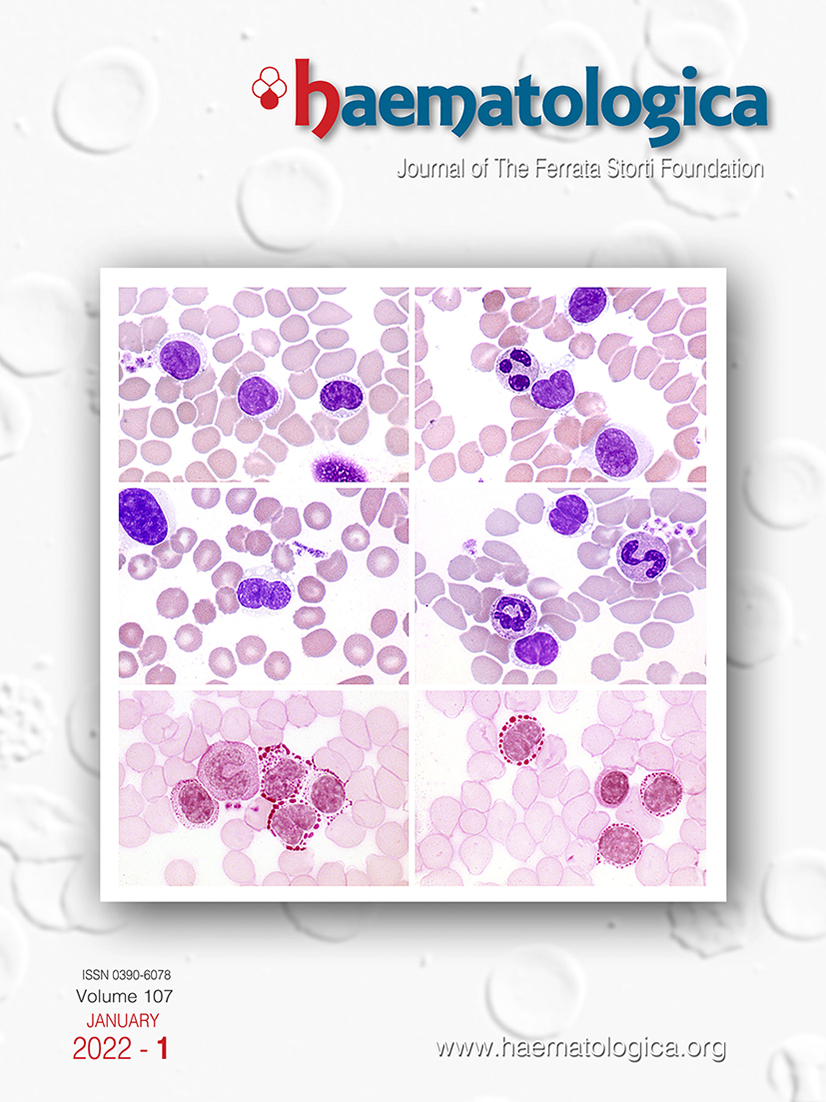Sézary syndrome is the leukemic variant of a cutaneous mature T-cell lymphoma, characterized by achronic course, and by the triad of diffuse erythroderma, lymphadenopathy, and neoplastic T-lymphocytes in the blood without significant involvement of the bone marrow. Sézary cells show typically striking nuclear convolutions which may give the nucleus a cerebriform appearance, condensed chromatin and sometimes evident nucleoli; in some cells the agranular cytoplasm contains a ring of vacuoles (Figure A-D). The cytoplasmic vacuoles are strongly positive for periodic acid Schiff stain (Figure E, F). Sézary cells show focal reactivity for acid hydrolases, a mature T-cell, CD4+, often aberrant phenotype and monoclonal rearrangement of TCR genes. In addition to the above reported triad, one or more of the following criteria are required for diagnosis: an absolute Sézary cell count ≥1,000/mL, an expanded CD4+ T-cell population with a CD4:CD8 ratio of ≥10, and loss of one or more T-cell antigens.1
Footnotes
Correspondence
Disclosures
No conflicts of interest to disclose
References
- Invernizzi R. Mature T- and NK-cell neoplasms. Haematologica. 2020; 105(Suppl 1):162-170. Google Scholar
Figures & Tables
Article Information

This work is licensed under a Creative Commons Attribution-NonCommercial 4.0 International License.

